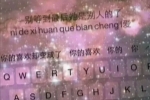
广东中考英语作文范例【一】
导入:
第1段:Recently we’ve had a discussion about whether we should... (导入话题
Our opinions are divided on this topic.(观点有分歧
正文:
第2段:Most of the students are in favour of it.(正方观点
Here are the reasons. First... Second... Finally...(列出2~3个赞成的理由
第3段:However, the others are strongly against it. (反方观点
Their reasons are as follows. In the first place... What’s more... In addition...(列出2~3个反对的理由
结论:
第4段:Personally speaking, the advantages overweigh the disadvantages, for it will do us more harm than good, so I support it.(个人观点 オ
广东中考英语作文范例【二】
1。 叙述的人称
英语的记叙文一般是以第一或第三人称的角度来叙述的。用第一称表示的是由叙述者亲眼所见、亲耳所闻的经历。它的优点在于能把故事的情节通过“我”来传达给读者,使人到真实可信,如身临其境。如:
The other day, I was driving along the street。 Suddenly, a car lost its control and ran directly towards me fast。 I was so frightened that I quickly turned to the left side。 But it was too late。 The car hit my bike and I fell off it。
用第三人称叙述,优点在于叙述者不受“我”活动范围以内的人和事物的限制,而是通过作者与读者之外的第三者,直接把故事中的情节展现在读者面前,文章的客观性很强。如:
Little Tom was going to school with an umbrella, for it was raining hard。 On the way, he saw an old woman walking in the rain with nothing to cover。 Tom went up to the old woman and wanted to share the umbrella with her, but he was too short。 What could he do? Then he had a good idea。
2。 动词的时态
在记叙文中,记和叙都离不开动词。所以动词出现率最高,且富于变化。记叙文中用得最多的是动词的过去的',这是英语记叙文区别于汉语记叙文的关键之处。英语写作的优美之处就在于这些动词时态的变化,正是这一点才使得所记、所叙有鲜活的动态感、鲜明的层次感和立体感。
3。 叙述的顺序
记叙一件事要有一定的顺序。无论是顺叙、倒叙、插叙还是补叙,都要让读者能弄清事情的来龙去脉。顺叙最容易操作,较容易给读者提供有关事情的空间和时间线索。但这种方法也容易使文章显得平铺直叙,读起来平淡乏味。倒叙、插叙、补叙等叙述方法能有效地提高文章的结构效果,让所叙之事跌宕起伏,使读者在阅读时思维产生较大的跳跃,从而为文章所吸引,深入其中。但这些方法如果使用不当,则容易弄巧成拙,使文章结构散乱,头绪不清,让读者不知所云。
4。 叙述的过渡
过渡在上下文中起着承上启下、融会贯通的作用。过渡往往用在地点转移或时间、事件转换以及由概括说明到具体叙述时。如:
In my summer holidays, I did a lot of things。 Apart form doing my homework, reading an English novel, watching TV and doing some housework, I went on a trip to Qingdao。 It is really a beautiful city。 There are many places of interest to see。 But what impressed me most was the sunrise。
The next morning I got up early。 I was very happy because it was a fine day。 By the time I got to the beach, the clouds on the horizon were turning red。 In a little while, a small part of the sun was gradually appearing。 The sun was very red, not shining。 It rose slowly。 At last it broke through the red clouds and jumped above the sea, just like a deep-red ball。 At the same time the clouds and the sea water became red and bright。
What a moving and unforgettable scene!
5。 叙述与对话
引用故事情节中主要人物的对话是记叙文提高表现力的一种好方法。适当地用直接引语代替间接的主观叙述,可以客观生动地反映人物的性格、品质和心理状态,使记叙生动、有趣,使文章内容更加充实、具体。试比较下面两段的叙述效果:
I was in the kitchen, and I was cooking something。 Suddenly I heard a loud noise from the front。 I thought maybe someone was knocking the door。 I asked who it was but I heard no reply。 After a while I saw my cat running across the parlor。 I realized it was the cat。 I felt released。
这本来应是一段故事性很强的文字,但经作者这么一写,就不那么吸引人了。原因是文中用的都是叙述模式,没有人物语言,把“悬念”给冲淡了。可作如下调整:
I was in the kitchen cooking something。 "Crash!" a loud noise came from the front。 Thinking someone was knocking at the door, I asked, "Who?" No reply。 After a while, I saw my cat running across the parlor。 "It's you。" I said, quite released。
广东中考英语作文范例【三】
“十年踪迹走红尘,回首青山入梦频。紫绶纵荣争及睡,朱门虽富不如贫。”
留下一纸《归隐》,陈抟放下官位,携几卷旧书去追寻频频入梦的青山。如果有人相问,他也许会说:适合就好。
“木末荚蓉花,山中发红萼。涧户寂无人,纷纷开且落。”
自顾自美丽的辛夷花栖在琴头,深林里人不知的明月照着青衣白衫的男子。看淡荣辱,是非乃至生死,官场上少了一个碌碌无名的庸僚,竹屋前多了一位禅意静深的侍佛。我想摩诘本就不是俗世中人,他适合的,是“明月松间照,清泉石上流”,是“人闲桂花落,夜静春山空”。所以,历史的烟尘掩盖了无数发黄的名字,却洗不去大唐皎洁如玉的月光,胭红的芙蓉在人们心头开落了千年,那男子便是这永恒里深镌的风景。
他们不是没有沾染过凡尘,他们也曾有过“一举成名天下知”的荣耀,只是宦海浮沉之后,他们终于发现,富贵非我愿,只要适合,哪怕天盖地庐,也是岁月静好,现世安稳。
可如今,我们的本心在哪里?我们的“适合”又在哪里?我不信那样多人竞争一个政府岗位只是出自本真的热爱与所擅,我不信天文、地质专业无人问津是因为学子们无趣无才——哪个人会忘记,小时候璀璨的`夏夜与彩云一般美丽的鹅卵石?
我们已经失去了勇气去追求我们真正适合的梦想,在金钱为尊的社会里,我们做着自己不想做却有丰厚报酬的工作,依靠别人的羡慕与嫉妒而活,可当我们走到生命的尽头,我们是否会想到,这一辈子我有没有为自己做一件事,有没有为自己而活?
我相信,每一个人,总会遇到适合自己的那一件事,或一个人,在相遇的瞬间,就如同漂泊的飞鸟找到了家园,那样一种精神深刻的颤栗和喜悦,是作为人所能体验到的最大的幸福。即使那草窠残破不堪,也只顾风雨兼程,因为只有那里,才是心灵唯一的归宿。
从教十八年的母亲,曾经无数次向我回忆起,她进入学堂的第一天,那位年轻美丽的女老师,身姿翩然地走上讲台,对着一屋童稚的眼睛,清清淡淡地笑起来,那一瞬间,一切的时间与空间都离她远去,只余那颗心,低下去,低下去,低到尘埃里,然后,开出一朵花来。
就这样将一生的时光交付于此么?她问自己。
“适合,就好。”
那些花摇曳在红尘中,凝着深沉的欢喜的泪滴。
那一天风清云淡,阳光明媚,正是飞鸟振翼高飞的佳期。
广东中考英语作文范例【四】
1。 头绪分明,脉络清楚
写好记叙文,首先要头绪分明,脉络清楚,明确文章要求写什么。要对所写的事件或人物进行分析,弄清事件发生、发展一直到结束的整个过程,然后再收集选取素材。这些素材都应该跟上述五个“ W ”和一个“ H ”有关。尽管不是每篇记叙文里都必须包括这些“ W ”和“ H ”,但动笔之前,围绕五个“ W ”和“ H ”进行构思是必不可少的。
2。 突出中心,详略得当
在文章的框架确定后,对支持故事的素材的选取是很关键的。选材要注意取舍,应该从表现文章主题的需要出发,分清主次,定好详略。要突出重点,详写细述那些能表现文章主题的重要情节,略写粗述那么非关键的次要情节。面面俱到反而使情节罗列化,使人不得要领。这一点是写好记叙文要解决的一个基本问题,也需要一定的技巧。如:
One night a man came to our house and told me, "There is a family with eight children。 They have not eaten for days。" I took some food with me and went。
When I finally came to that family, I saw the faces of those little children disfigured (破坏外貌) by hunger。 There was no sorrow or sadness in their faces, just the deep pain of hunger。
I gave the rice to the mother。 She divided the rice in two, and went out, carrying half the rice。 When she came back, I asked her, "Where did you go?" she gave me this simple answer, "To my neighbors — they are hungry also!"
3。 用活语言,准确生动
记叙文要用具体的事件和生动的语言对人、事、物加以叙述。一篇好的记叙文的语言既要准确、生动,又要表现力强,这样才能把人、事描写得具体生动,其可读性才强。试比较下面一篇例文修改的前后效果。
原文:
One day Xiaoqiang was wandering away。 He was soon lost among people and traffic。 He could not find the way back home and started crying。 Just then, two young students who were passing by found him standing alone in front of a shop and crying。 They went up to Xiaoqiang and asked him what had happened。 Xiaoqiang told them how he got lost and where he lived。 The two students decided to take him home。 Mother was pleased to see Xiaoqiang come back safe and sound。 She invited the two students into the house and gave them some money, but they didn't take it。 She served them with tea but they left。
修改后:
The other day, five-year-old Xiaoqiang left home alone and wandered happily in the street。 After some time, he felt hungry so he wanted to go back home。 But he found he was lost among the crowded people and heavy traffic。 When he could not find the way home, he started and crying。 Just then, two young students who were passing by from school found him sanding crying in front of a shop。 They immediately went up to him。
"Little boy, why are you standing here crying?" they asked。
"I want Mom, I go home。" said the boy, still crying。
"Don't worry, we'll send you home。"
And they spent the next two hours looking for the boy's house。 With the help of a policeman, they finally found it。
When the worried mother saw her son come back safe and sound, she was so thankful and she invited the students into her house。 Gratefully, she offered them some money, saying it was a way to express her thanks, but the young students firmly refused it and left without even a cup of tea。
广东中考英语作文范例【五】
导入:
第1段:Some people hold the opinion that A is superior to B in many ways. Others, however, argue that B is much better. Personally, I would prefer A because I think A has more advantages.
正文:
第2段:There are many reasons why I prefer A. The main reason is that ... Another reason is that...(赞同A的原因
第3段: Of course, B also has advantages to some extent... (列出1~2个B的优势
结论:
第4段: But if all these factors are considered, A is much better than B. From what has been discussed above, we may finally draw the conclusion that ...(得出结论 オ
广东中考英语作文范例【六】
一般说来,的创新构思,可有下列切入角 度。
一、从话题的另一意义的角度切入
许多中考话题都具有多义性,若只盯住其本义或其常用义,则构思很难出新,写出的作文虽不跑题但也显得一般化,若撇开其本义或常见义,转而从其引申义或 其比喻义的角度切入,构思定能出新。如黑龙江省2001年的中考话题是"水",若从自然界之"水"这个意思层面上去理解,把"水"当成名词,则构思很难出 新;若把"水"理解成形容词,如"这个人很水",在这个层面上理解"水"的意思,则其拟题、行文都会很有新意。
二、从缩小话题内涵的角度切入
有许多中考话题的意思非常宽泛,若给话题加上一些限制语或修饰语,便缩小了话题的内涵,有利于考场作文出新出奇。如海南省中考话题是"第一次",便应 缩小其内涵,才有利于构思选材,考场作文才能出新出奇。这里要强调的是:添加的限制语或修饰语,必须避开众生皆谈、人云亦云的误区,要从自己的材料库中那 许多不为人知的人、事、景、物着手。这样,新颖、独特的作文内容就会流于笔底,并能紧紧地抓住阅卷老师的眼和心。
三、从话题的逆向思维角度切入
围绕话题,自我多方设问,多方求答,用以开启思维,立意选材,这是众多考生的一般作法。然而,绝大多数考生只知沿着话题正向发问,而很少有逆向发 问的。如江西省2001年中考话题"尊重",考生可以提出"何为尊重"、"谁尊重谁"、"为什么要尊重"、"谁可做尊重或被他人尊重的典范"等等问题,这 些都是从正面发问,没能跳出常规思维的圈子;若舍弃"正向",从"逆向"角度思考发问,"为什么谁不尊重谁"、"不尊重他人好不好,为什么"、"不尊重的 事例或现象有哪些"、"怎样消除不尊重现象"等等,如此这般的提问思考,文章的构思、选材就避开了老调,步入了新境。
四、从话题的另一时空的角度切入
围绕考试话题,写自己经历的事,写自己身边的事,从家庭时空、从社会时空、从学校时空范围去立意选材,这本无不可。但这都是从话题的"现实时空"去构 思的。若能启动联想、想象或幻想,从话题的"过去时空"或"未来时空"角度去构思,只要联想、想象或幻想的人、事、景、物合乎情理,不管写的是话题的"过 去时空"或"未来时空",只要能含蓄、曲折地反映话题的"现实时空",便能写出颇具新意的考场作文来。如四川省德阳市2001年的中考话题"初三生活", 若一般人可能都会写自己或同龄人的初三生活,若启动联想、想象或幻想,写爷爷、奶奶的初三生活或几十年以后自己子孙的初三生活,只要合乎情理,则定能让阅 卷老师耳目一新,从而拍案叫绝。
广东中考英语作文范例【七】
导入:
第1段:提出一种现象或某种困难作为议论的话题
正文:
第2段:Many ways can help to solve this serious problem, but the following may be most effective. First of all... Another way to solve the problem is ... Finally...(列出2~3个解决此类问题的办法
结论:
第3段:These are not the best but the only two/ three measures we can take. But it should be noted that we should take action to...(强调解决此类问题的根本方法

















